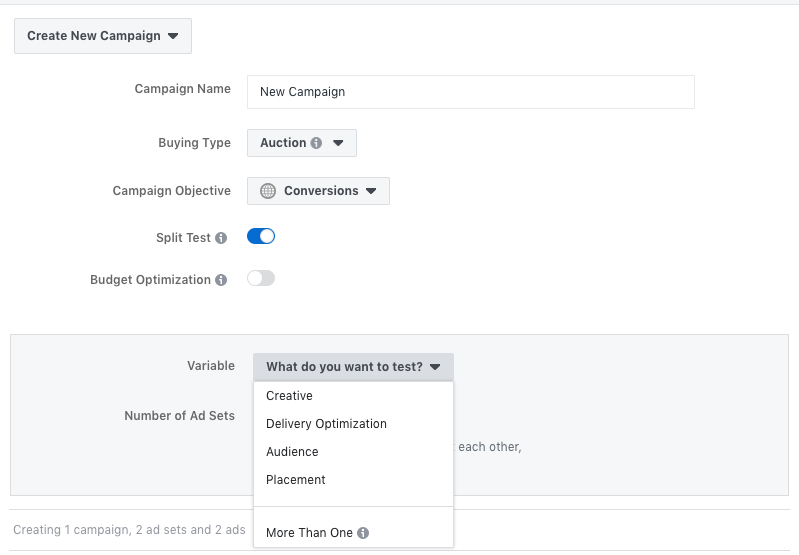One of the guiding principles I utilize for Account Management is taking a beat to consider: If a competitor digital agency took a look at my accounts, what would they say to my client to try and win the business? Albeit a bit paranoid in nature, it’s a useful lens to view your work as objectively as possible.
Having run through this exercise countless times, here are a handful of useful questions to ask yourself to make sure you’re staying light-footed in your accounts:
Are you actively running experiments?
You should be running experiments regularly in your accounts. Google and Facebook make it painless to conduct 50/50 split tests. Google’s Drafts & Experiments & Ad Variation take minutes to employ and allow you to access quick insights that you can share with a client. A few easy set-ups include:
- landing page split tests
- automated bidding strategies
- ad copy/CTAs
- creative
Here’s a preview of how the dashboard delivers insights, additionally the test will advise when the test has reached statistical significance:

Facebook allows you to conduct 50/50 split tests, as well as multi-variate tests. When setting up a new campaign, if you check the “split test” node you can test ad creative, delivery, audience & placements. Typically, the time-frame for testing in Facebook is 3-14 days, so you can make decisions based on your data rather quickly. Additionally, it’s easy to apply the winner.

For other engines where there are no intrinsic experimental modules, testing should still be employed manually to ensure that you’re finding the optimal mix of bids, audiences, and creative. So, no skimping here.
Are you finding efficiencies in your accounts?
It’s one thing to get balanced CPL and conversion volume from your accounts, but always dig deeper. You can run analyses then implement the following bid adjustments to finesse your campaigns:
- Time of Day
- Day of Week
- Demographic
- Device
- Income-based
Google Ads’ new interface allows you to see excellent visuals of when your campaigns are at peak performance, but I always like to pull the hard data over a long stretch of performance think 3-6 months, depending on the account and the volume of traffic it receives.
Are you building audiences?
There has been an explosion of audience features available for Search Engines. Google offers In-Market for Search & Display, Demographic Details, Custom Intent & Custom Affinity for Display. Bing also has In-Market for Search, and now the hotly-anticipated LinkedIn Profile Targeting for Search and Microsoft Audience Ads. The beauty of layering in these audiences is that you can add in several at a time and allow the data to build before you make any decisions about where to place bid adjustments. This literally takes a few minutes to implement, so make sure you’re at least building data on audience segments. You could find something surprising.
Have you researched new platforms for your client?
Once you have achieved homeostasis in your accounts, it’s time to look into expansion. Do you have a list of new platforms or strategies in your back pocket? What if your client asks you a question like: “If Facebook performance drops, do we have a back-up plan of where to put that spend?” Do you have an answer? What if your client gives you extra spend, would you know where to apply it? Don’t get caught with you PPC pants down, proactively research other spaces your clients could or should be advertising in.
Are you employing new features and tools available in platforms?
A recent example would be testing Bing’s new Microsoft Audience Network. Have you raised your hand to be entered in new Betas that your accounts might be eligible for? Recently, Google and Bing offered an extra headline and description line for text ads. Have you implemented them yet? For me, one of the worst questions I can get from a client is “have you heard about…” and if I haven’t, I feel like a total rube.
Don’t be complacent in your account management. One of the number one pain points we hear from new clients is that their previous agency wasn’t proactive in bringing new insights or ideas. Stay on your toes, and PPC Like everyone is watching.



